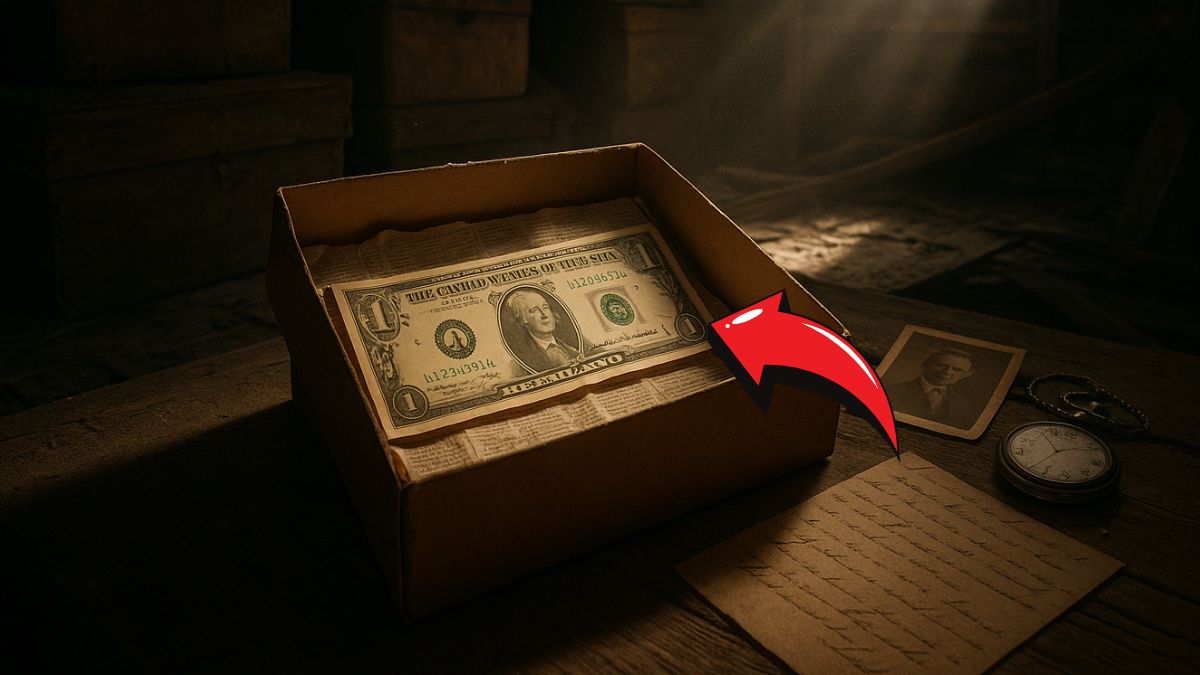In an extraordinary turn of events, a 1969 $1 bill featuring a palindromic serial number was discovered in an attic and recently fetched an unprecedented sum at auction.
This remarkable find has captivated the numismatic community and highlighted the significant value that unique serial numbers can add to currency notes.
What Makes This $1 Bill So Special?
Palindromic Serial Number
A palindromic serial number reads the same forwards and backwards. In this case, the bill’s serial number, J28399382A, exhibits this rare characteristic. Such numbers are highly sought after by collectors due to their symmetry and rarity.
Series 1969 Federal Reserve Note
The bill belongs to the Series 1969, a notable series in U.S. currency history. This series was among the first to feature the new Treasury seal with English wording instead of Latin, marking a significant design change in American banknotes.
Detailed Information on the 1969 $1 Palindromic Bill
| Feature | Details |
|---|---|
| Denomination | $1 |
| Series | 1969 |
| Serial Number | J28399382A |
| Type | Federal Reserve Note |
| Condition | Crisp Uncirculated |
| Unique Feature | Palindromic Serial Number |
| Auction Platform | eBay |
| Auction Date | March 2025 |
| Final Bid | $24.95 |
The Significance of Palindromic Serial Numbers
Palindromic serial numbers, also known as “radar notes,” are a subset of fancy serial numbers that are highly prized in the world of currency collecting.
Their symmetrical nature makes them aesthetically pleasing and rare, especially in older series like the 1969 notes.
Market Value and Collector Interest
While the aforementioned bill sold for $24.95, it’s important to note that the value of such notes can vary significantly based on factors like:
- Condition: Uncirculated bills fetch higher prices.
- Rarity: The uniqueness of the serial number increases value.
- Demand: Collector interest can drive up prices.
For instance, other 1969 $1 bills with fancy serial numbers have been listed at varying prices depending on these factors.
The discovery and subsequent auction of the 1969 $1 bill with a palindromic serial number underscore the hidden treasures that may lie unnoticed in our possessions.
This event serves as a reminder of the fascinating world of currency collecting and the value that unique features can add to seemingly ordinary items.
FAQs
What is a palindromic serial number on a bill?
A palindromic serial number is one that reads the same forwards and backwards, such as J28399382A. These are rare and highly valued by collectors.
How can I determine if my $1 bill has a valuable serial number?
Look for unique patterns like palindromes, repeating digits, or low serial numbers. Consulting a currency collector or appraiser can provide more insights.
Where can I sell a rare $1 bill?
Platforms like eBay, Heritage Auctions, and specialized numismatic dealers are popular venues for selling rare currency notes.

